You Can Listen Here 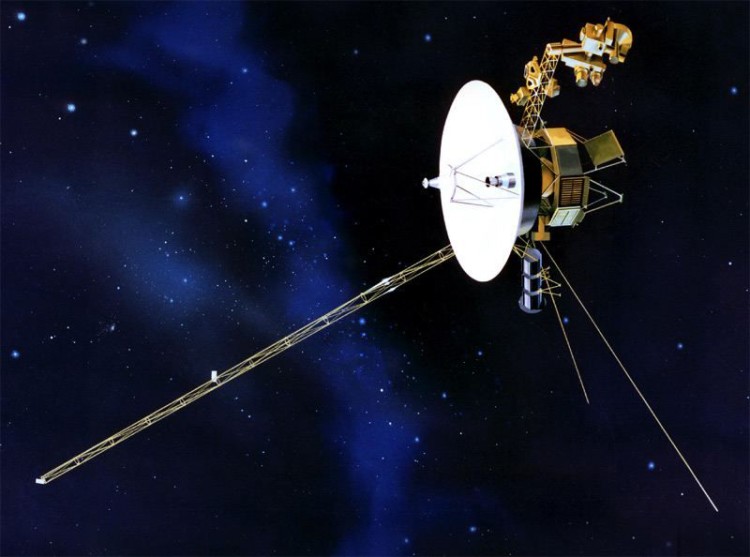 As lovingly tended as any cathedral, the Voyagers’ “65,000 separate parts”* were assembled by human hands alone. Launched in August and September of 1977, Voyager 1 and 2 are the fastest objects ever created. They took photographs and collected data from Jupiter, Saturn, Uranus and Neptune. Because of their work, we know that Europa, a moon of Jupiter, hides an ocean beneath its ice surface that contains more liquid water than all the seas of earth. We know that the rings of Saturn are only 30 feet thick but “span the width of more than 20 earths.” We know that the outer planets are stranger and more surprising than we had imagined.
As lovingly tended as any cathedral, the Voyagers’ “65,000 separate parts”* were assembled by human hands alone. Launched in August and September of 1977, Voyager 1 and 2 are the fastest objects ever created. They took photographs and collected data from Jupiter, Saturn, Uranus and Neptune. Because of their work, we know that Europa, a moon of Jupiter, hides an ocean beneath its ice surface that contains more liquid water than all the seas of earth. We know that the rings of Saturn are only 30 feet thick but “span the width of more than 20 earths.” We know that the outer planets are stranger and more surprising than we had imagined.
Voyager
The Voyagers are moving through interstellar space at 35,000 mph; they are rushing away from us into the heart of the Milky Way Galaxy and probably past the lifetime of our species. The Voyagers click off the miles — eleven billion and counting; even with electrical impulses traveling at the speed of light, it takes 36 hours to send a message back or forth.
For millions of years, geological gasps of time, they will be the first of our robot envoys. They each carry a golden record of 116 images of Earth: dolphins, a gymnast, Monument Valley, eight anatomical diagrams of the human body, an airplane in flight, a fetus, the Sydney Opera House, a page from Newton’s System of the World …. They each carry 27 pieces of music: the first movement of Beethoven’s “Fifth Symphony”; the “Queen of the Night” aria from Mozart’s “Magic Flute”; “Dark was the Night” by Blind Willie Johnson; rock’n’roll, the blues, 3 by Bach, a Navajo chant, panpipes, drums, bagpipes, and a Peruvian wedding song ….
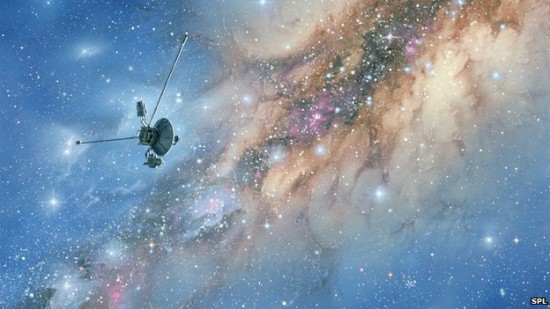 A painting of Voyager, millennia from now, entering a stellar dust cloud
A painting of Voyager, millennia from now, entering a stellar dust cloud
There are others we have made on their own journeys: Pioneer 10 (and 11) carrying a gold plaque with the likeness of a man and woman and information on our DNA and planetary location will rendezvous with the star Aldebaran two million years from now; the Mariners, Luna’s, Venera’s and Viking’s — orbiters and visitors to Mercury, Venus, Mars and the Moon; Magellan which mapped Venus; Galileo which descended into Jupiter’s atmosphere; Cassini, scheduled for a close fly-by of Titan on March 16, a few days from now; Ulysses, charting our Sun; New Horizon set to circle Pluto this July and then to be downloaded with a crowd sourced digital interstellar message — all our best mechanical angels of our better nature sent out into the void, hopeful in the very fact of their sending, in the nature of their quest, one without ambition for profit but only seeking to know more, to satisfy questions that have no utilitarian purpose, whose answers simply increase our wisdom. This is really our quest, for these machines do our “remote sensing”. They see for us, draw in, inspect, measure, quantify, and then dispatch their glorious news. Loved by engineers and astronomers — loved in every real sense with a deep, abiding affection and a bestowing of praises — intrepid, subtle, elegant. They are our robot-avatars. We shall have disappeared before they do. Whatever we have chosen for them, they bear forward into infinite time and distance.
*all quotations taken from The Interstellar Age: Inside The Forty-Year Voyager Mission by Jim Bell
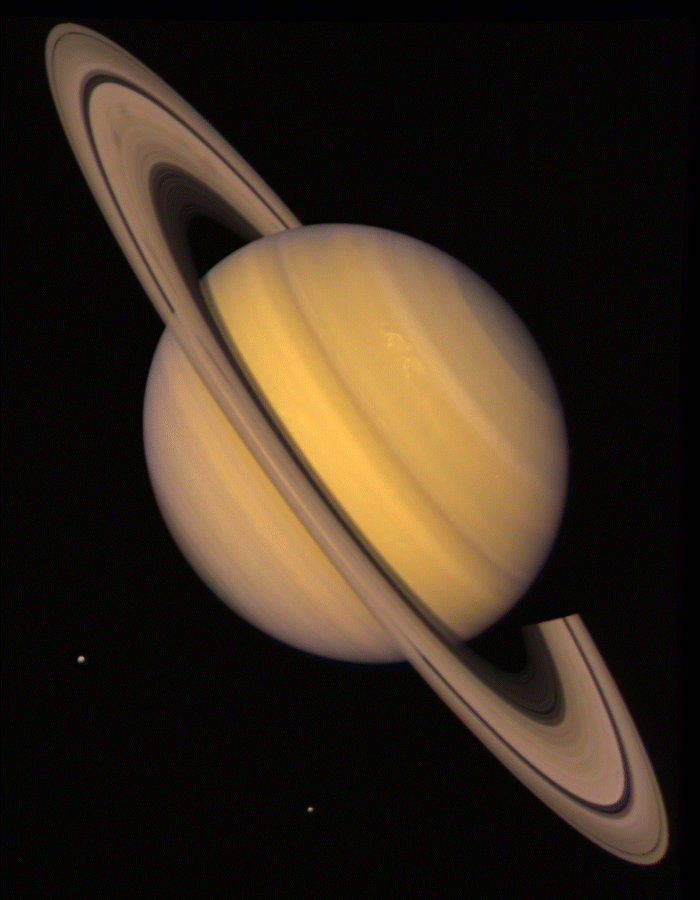 In order: Voyager photos of Saturn, Neptune, Jupiter, the crescent of Uranus
In order: Voyager photos of Saturn, Neptune, Jupiter, the crescent of Uranus 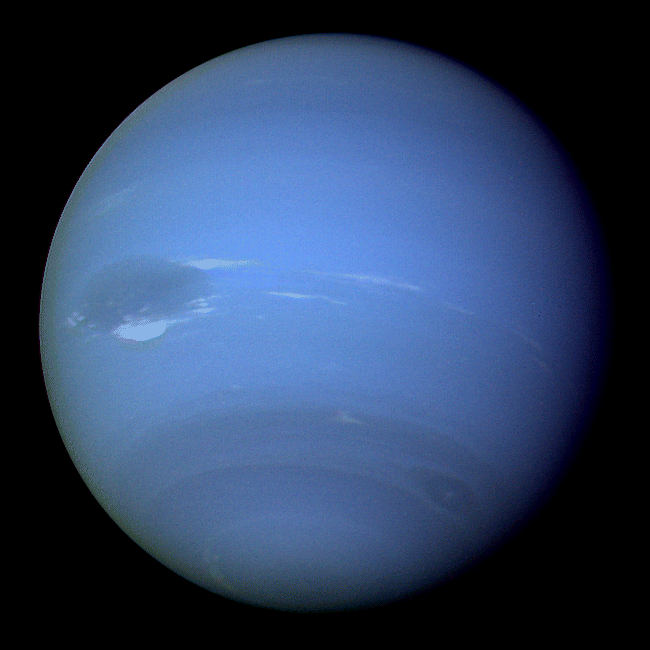
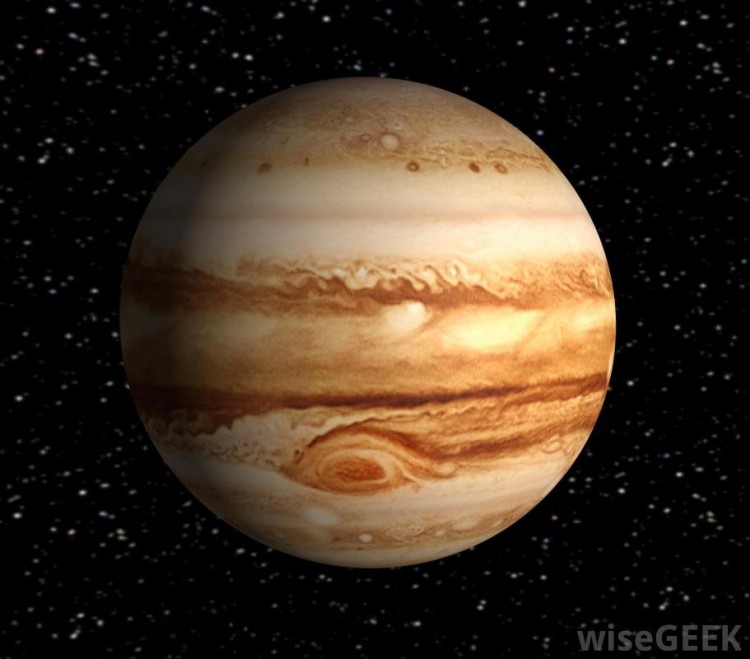
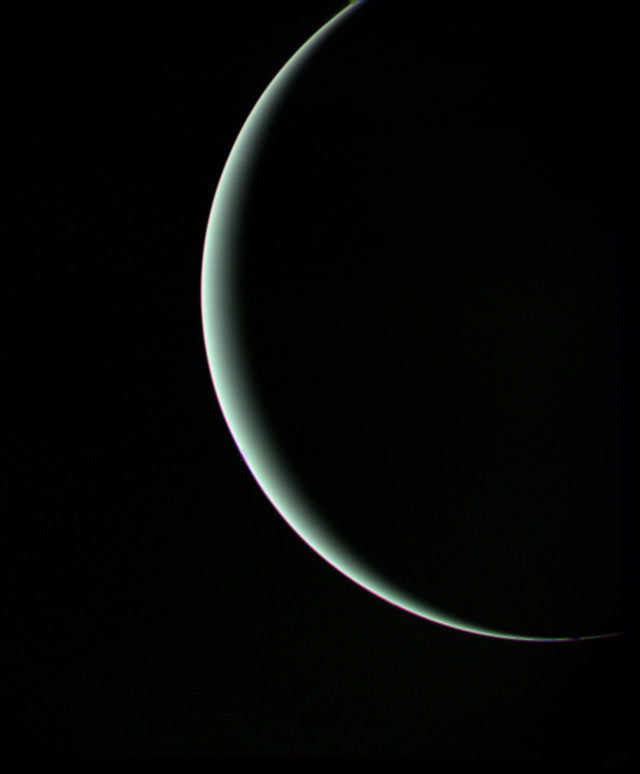
One of the coolest things we have ever done! But maybe just another stab at immortality?